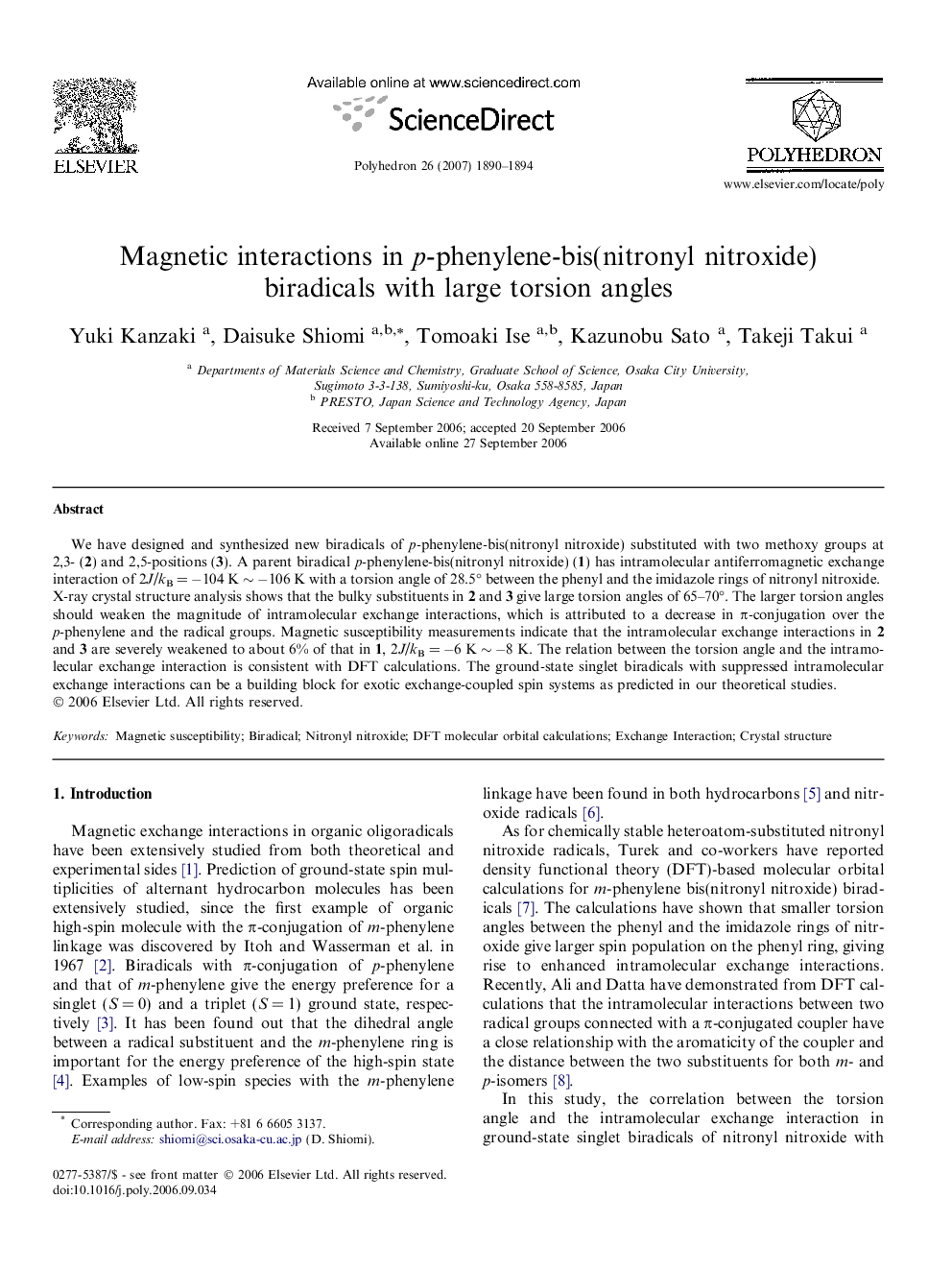| Article ID | Journal | Published Year | Pages | File Type |
|---|---|---|---|---|
| 1340033 | Polyhedron | 2007 | 5 Pages |
We have designed and synthesized new biradicals of p-phenylene-bis(nitronyl nitroxide) substituted with two methoxy groups at 2,3- (2) and 2,5-positions (3). A parent biradical p-phenylene-bis(nitronyl nitroxide) (1) has intramolecular antiferromagnetic exchange interaction of 2J/kB = −104 K ∼ −106 K with a torsion angle of 28.5° between the phenyl and the imidazole rings of nitronyl nitroxide. X-ray crystal structure analysis shows that the bulky substituents in 2 and 3 give large torsion angles of 65–70°. The larger torsion angles should weaken the magnitude of intramolecular exchange interactions, which is attributed to a decrease in π-conjugation over the p-phenylene and the radical groups. Magnetic susceptibility measurements indicate that the intramolecular exchange interactions in 2 and 3 are severely weakened to about 6% of that in 1, 2J/kB = −6 K ∼ −8 K. The relation between the torsion angle and the intramolecular exchange interaction is consistent with DFT calculations. The ground-state singlet biradicals with suppressed intramolecular exchange interactions can be a building block for exotic exchange-coupled spin systems as predicted in our theoretical studies.
Graphical abstractNew p-phenylene-based biradicals of nitronyl nitroxide 2 and 3 have been synthesized. The bulky methoxy substituents give rise to large inter-ring torsion angles of about 70°, which weakens the intramolecular exchange interaction to 2J/kB ∼ −6 K, about 6% of that for the parent biradical 1.Figure optionsDownload full-size imageDownload as PowerPoint slide
